Tug life: How Saint John tugboats are pushing toward the future
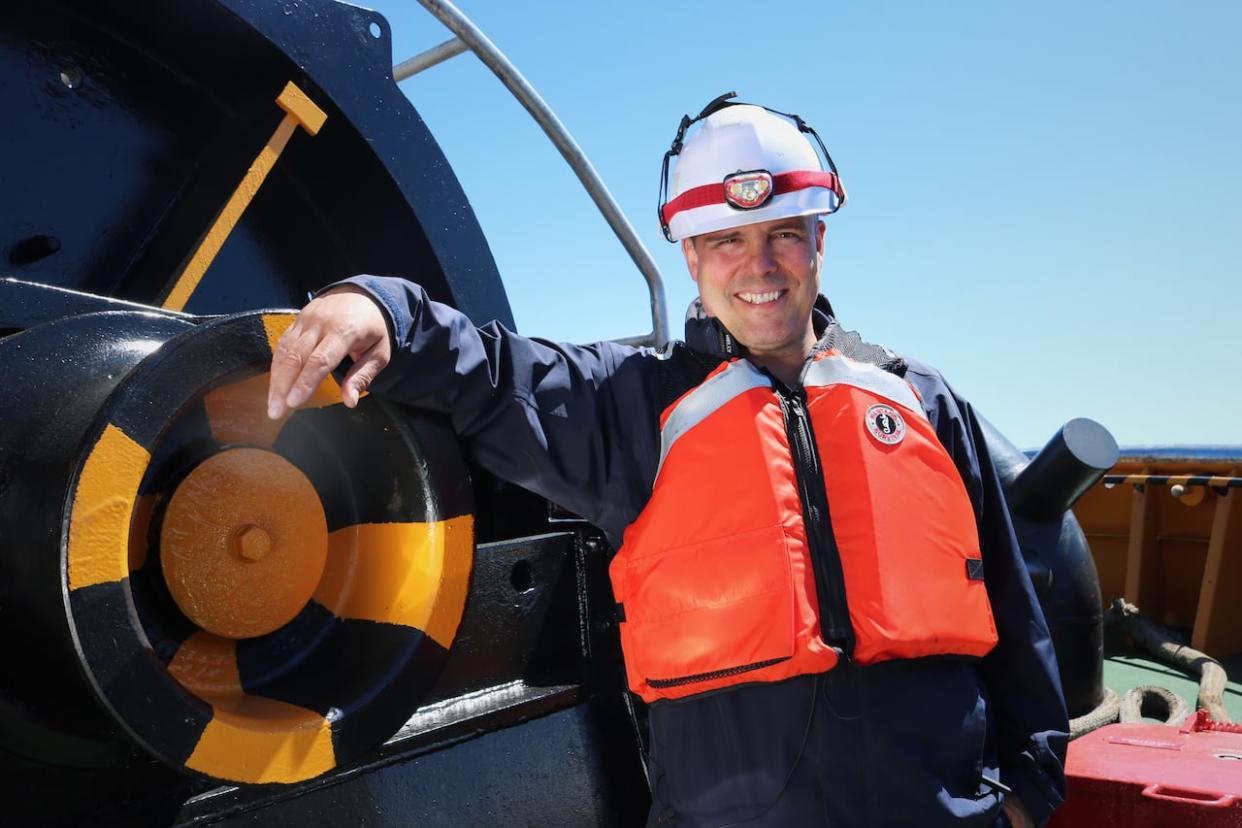
On an overcast June morning in Saint John, a massive, tangerine-orange tanker — the Da Hua Shan, sailing under the flag of Hong Kong — is radioing for clearance to leave Courtenay Bay.
It can't go without help.
The asphalt and bitumen tanker is 139 metres long, and the confines of the bay are narrow.
To get it off the dock, a Saint John harbour pilot radios to two tugboats — the Atlantic Fir, and the Atlantic Spruce — directing them as they line up alongside, pushing hard enough to let crews loosen the lines tying the tanker to Dock 1.
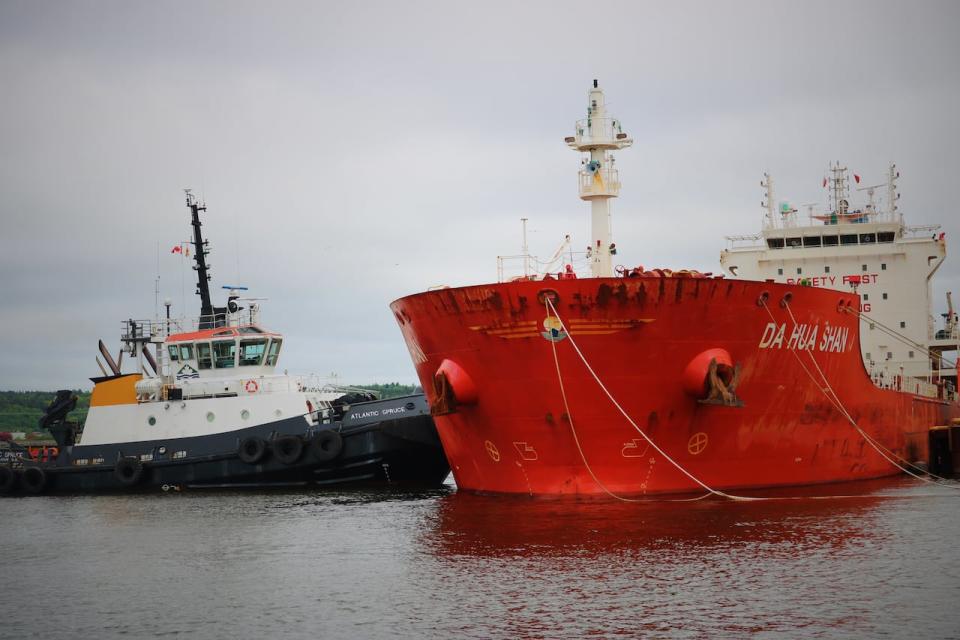
The Atlantic Spruce applies pressure to the side of a large oil tanker, allowing longshoremen to loosen the lines tethering it to the dock. (Julia Wright/CBC )
Water swirls and eddies behind the tugs as the longshoremen release the lines from the shore fixtures.
The heavy ropes are hauled on board, then Da Ha Shan is off the dock, with the tugs escorting it safely out of the Courtenay Bay channel.
The Atlantic Fir and Atlantic Spruce are immediately off to the next job — a tug and barge at Dock 2, headed to Philadelphia with a cargo of asphalt.
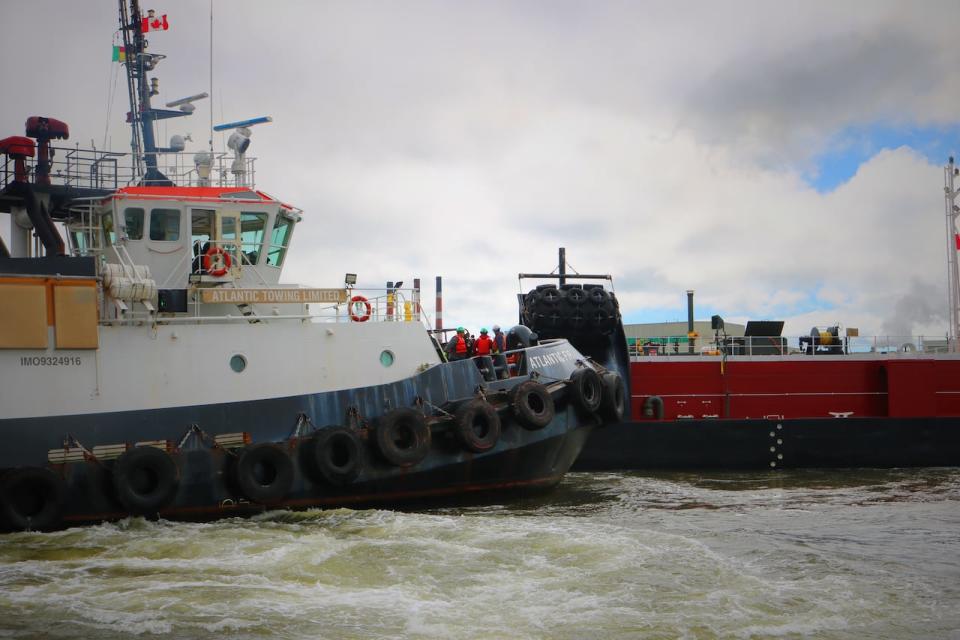
The Atlantic Fir helps to undock a barge headed to the United States with a cargo of asphalt. (Julia Wright/CBC)
Tight tidal timelines
"Things can get pretty hectic," said Gary Crowley, a training and development lead for Atlantic Towing who earned his captain's ticket in 2005.
The Bay of Fundy tides mean most of the shipping in Saint John has to happen "within a four-hour window of the high water mark," he said.
"After that, once we get into low water, and the ships aren't coming in, that's when we do a lot of our maintenance work.
"The work doesn't stop even if the ships aren't coming in."
Atlantic Towing, a subsidiary of J.D. Irving Ltd., operates tugboats 365 days a year in the Saint John harbour — in driving snow, fierce wind, and the world's highest tides.
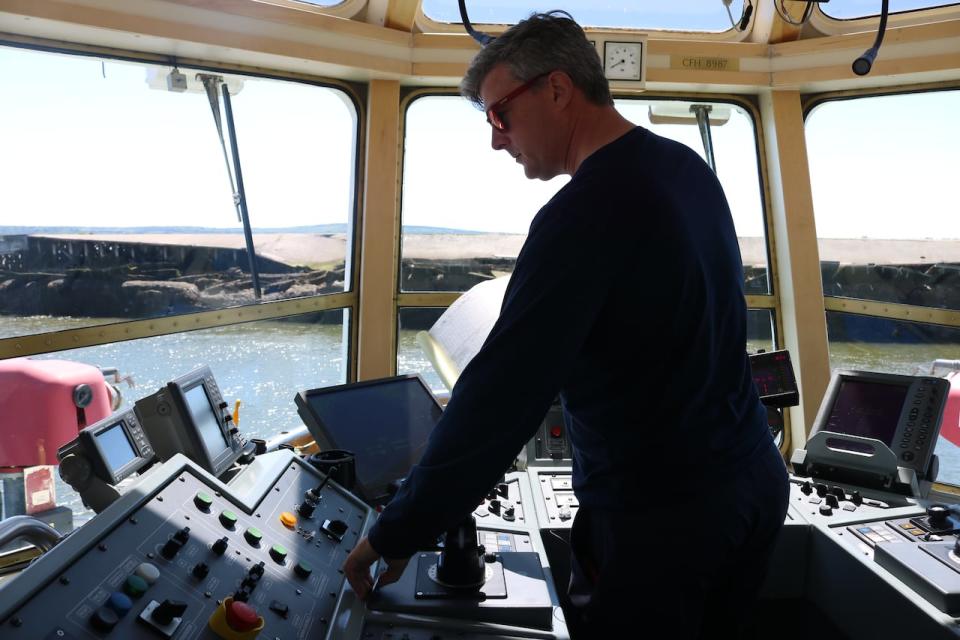
Gary Crowley, a tugboat captain of 25 years, who now trains other master mariners, navigates out of Pier 12 in west Saint John. (Julia Wright/CBC)
Tug captains "need depth-perception, co-ordination, and the ability to operate under pressure," said Ryan Burley, 31, who grew up fishing lobster and scallops in Musquash before he became a tugboat captain, like his father..
"You really wanted to stay focused."
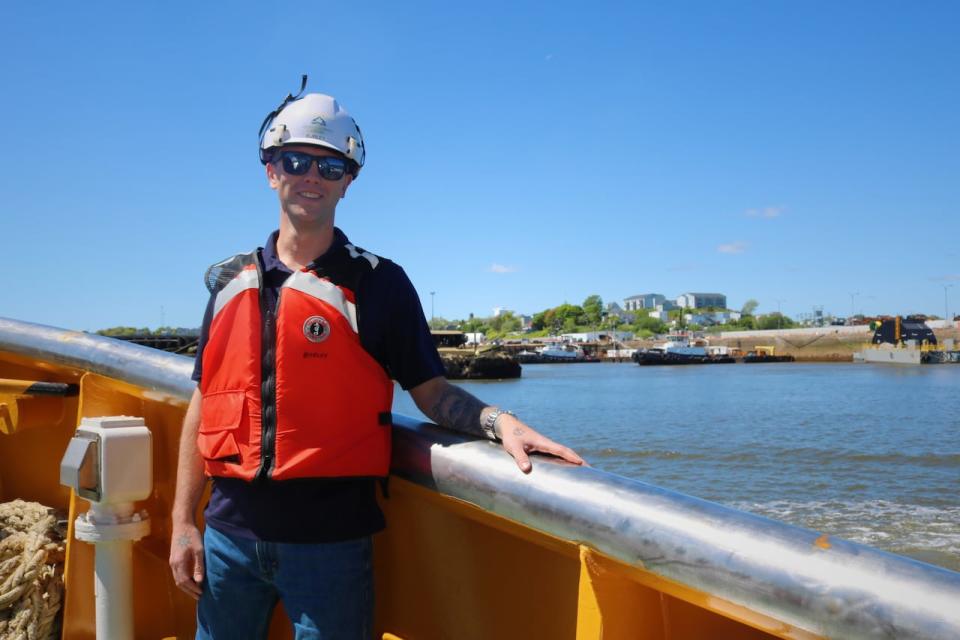
Captain Ryan Burley, 31, started working on tugs after spending his younger years on the water as a fisherman. 'Driving the boat was probably my favourite thing," he said. 'Just how everything worked, watching the other captains of the fishing boats and just trying to operate everything very smooth.' (Julia Wright/CBC)
Manoeuvring big ships
Large vessels that arrive in port are designed to "do their best work out in the open ocean," Burley said. "When they're in confined waters, they're not manoeuvrable at all."
Getting the ships safely on and off the dock involves a combination of assist lines, engines and the tug's own weight, used under the direction of a marine pilot to "slow [the large ships] down, help speed them up, and turn them around," Burley said.
Tugs can also play a role in marine construction — a type of job Crowley considers one of his career highlights. In the mid-1990s, he captained a tug transporting material used to build the Confederation Bridge between N.B. and P.E.I. In the early 2000s during the construction of the Canaport LNG terminal, Crowley took a barge to Marystown, N.L., to bring pieces of the wharves back to Saint John.
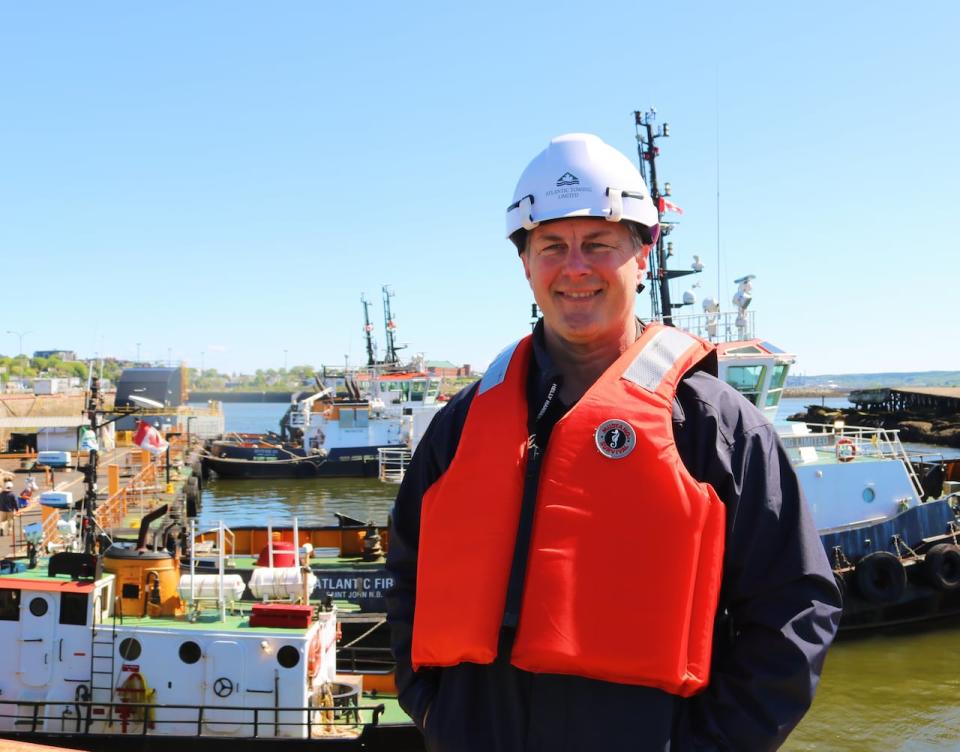
Gary Crowley started working as a captain in 2005 and now works as a training and development lead at Atlantic Towing. (Julia Wright/CBC)
It was during the LNG construction that Crowley encountered some of the "foulest weather I've ever seen in Saint John."
"Some wind had just come out of nowhere. It was in the southeast direction and probably two-meter waves outside. We had to try to operate, and get some barges and equipment, and bring it inside the harbour where it was a little bit more calm.
We got it all done and everybody went home safely."
The job has taken him as far south as Trinidad and the southern portion of the Gulf of Mexico, and as far north as Bull Arm, N.L.
On rare occasions, tugs can be called upon in rescues, and even to fight fires — as happened on Sept. 14, 2023, when Atlantic Osprey, owned by Atlantic Towing, sprayed 17 million gallons of water on a fire at American Iron and Metal over 17 hours, helping to extinguish a dangerous fire that could have otherwise been catastrophic.
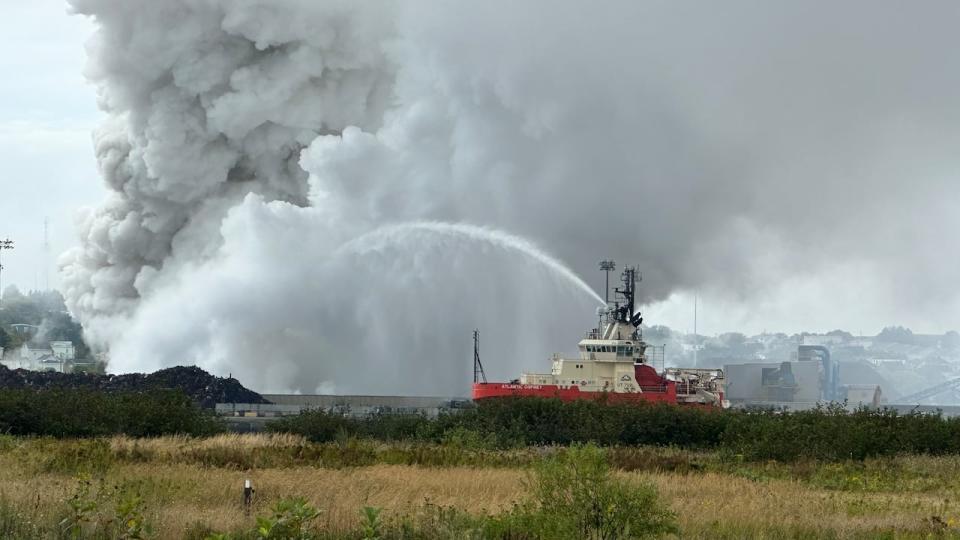
The Atlantic Osprey at work helping to contain the fire at American Iron and Metal. (Roger Cosman/CBC)
Almost 200-year history
Tugboats have a long history in the Port City
The first tug, Conqueror, was registered in 1846. It, like the other early tugs, existed mainly to transport timber from of Saint John to ocean-going vessels for delivery to ports all over the world.
Back then, it was a dangerous job: between 1891 and 1894, a total of 18 people died after falling off tugboats.
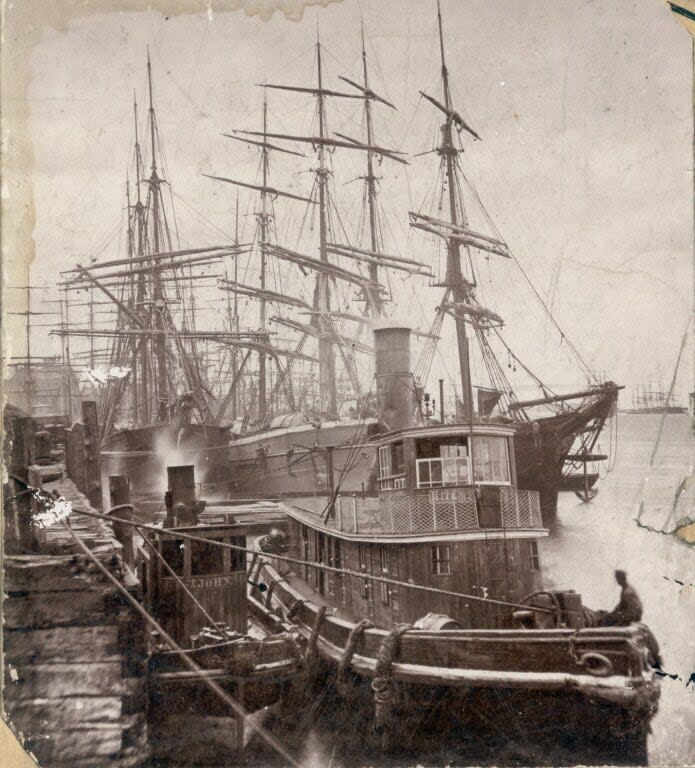
Two Saint John tugbaots, the St. John and the Hiram Perry Junior, pictured on the Saint John harbour in 1883. The safety features in the age of sail weren't quite what they are today. (New Brunswick Museum - Musée du Nouveau-Brunswick. Accession #: X12256)
In the modern era, said Crowley, safety has come "light years ahead" of where it was even a few decades ago.
"Safety really is at the forefront. We want to make sure that everybody gets to go home safe to their family at the end of the day."
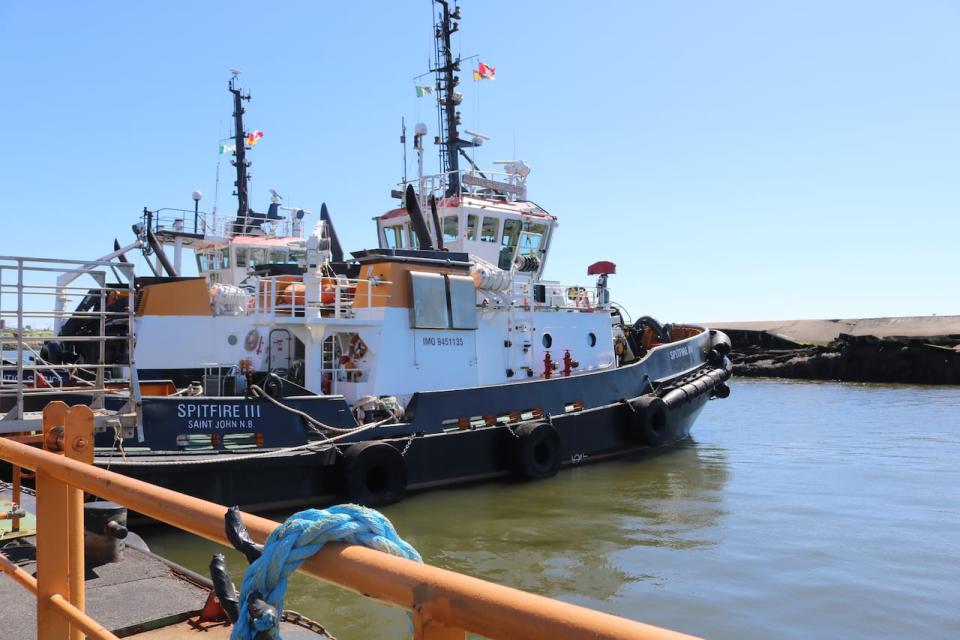
The Spitfire III, one of the newer tugs in Altantic Towing's Saint John fleet, boasts impressive firefighting capabilities in case of emergency. (Julia Wright/CBC )
In case of emergency, one of the newer tugs, the Spitfire III, "has a pump inside the engine room that is designed to pump up to 2000 cubic meters of water an hour," Crowley said.
"To put that into perspective, we could probably fill the Aquatic Centre swimming pool in about four minutes."
Currently, most of the work happens at Courtenay Bay, where the crude oil that comes into the Canaport LNG terminal at Mispec Point for processing through the Irving Oil Refinery gets shipped out on large tankers.
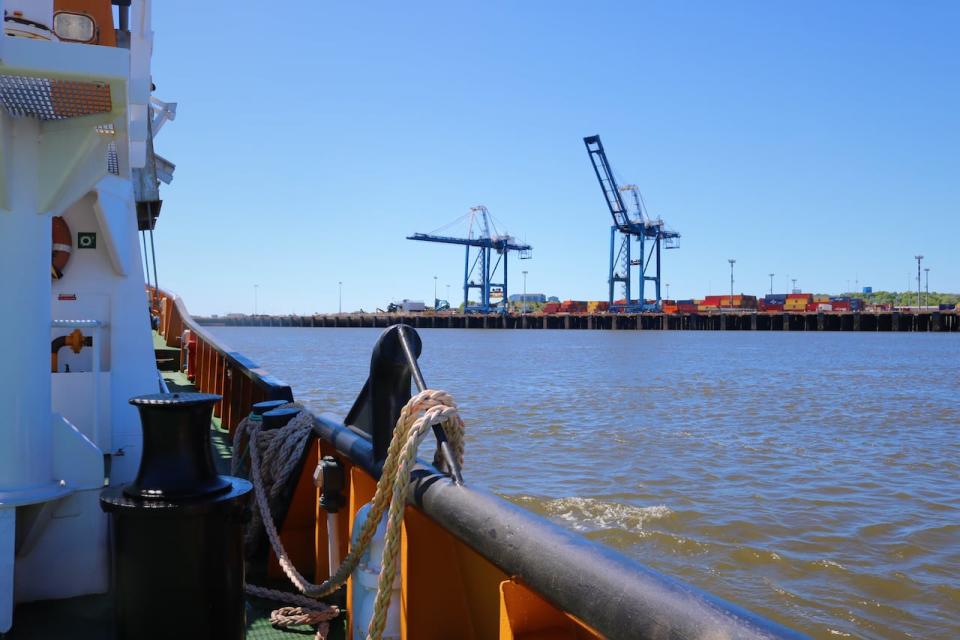
The view of Rodney Terminal from the deck of the Spitfire III. (Julia Wright/CBC)
But the container terminal over on the west side of Saint John has "really ramped up in the last five years," Crowley said. "So we're really seeing things turn around in the main harbour. We're spending a lot more time here now."
The tugs are well-monitored, according to Alan Roger, port superintendent for Atlantic Towing and a former marine engineer on the tugs.
"There's quite an extensive alarm system," he said.
In addition to an engineer on board who understands the ship's workings day to day, "anything that we're not privy to, [the alarm system] will alert us and we take care of it."
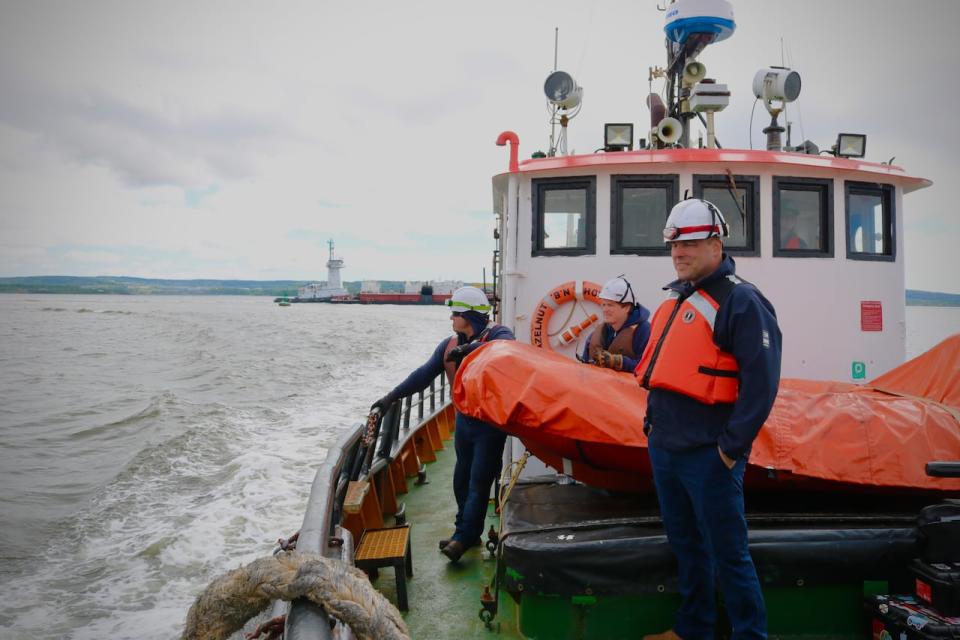
Atlantic Towing port superintendent Alan Roger, foreground, on the deck of the Irving Hazelnut, with deckhands Alex Black, right, and Nick MacPhee. (Julia Wright/CBC)
Help wanted
There is currently a shortage of qualified mariners in Canada.
According to Transport Canada in 2023, roughly 43 per cent of the country's marine shipping workforce is set to retire over the next 10 years, including 52 per cent of engineering officers and 47 per cent of its deck officers.
While life on board a tugboat isn't for everyone, the best perk of the job in his 26 years experience, Roger said, "is mostly the crew."
Working two weeks on, two weeks off means everyone on board gets to know one another well — living, eating, and socializing together around the clock during their rotation.
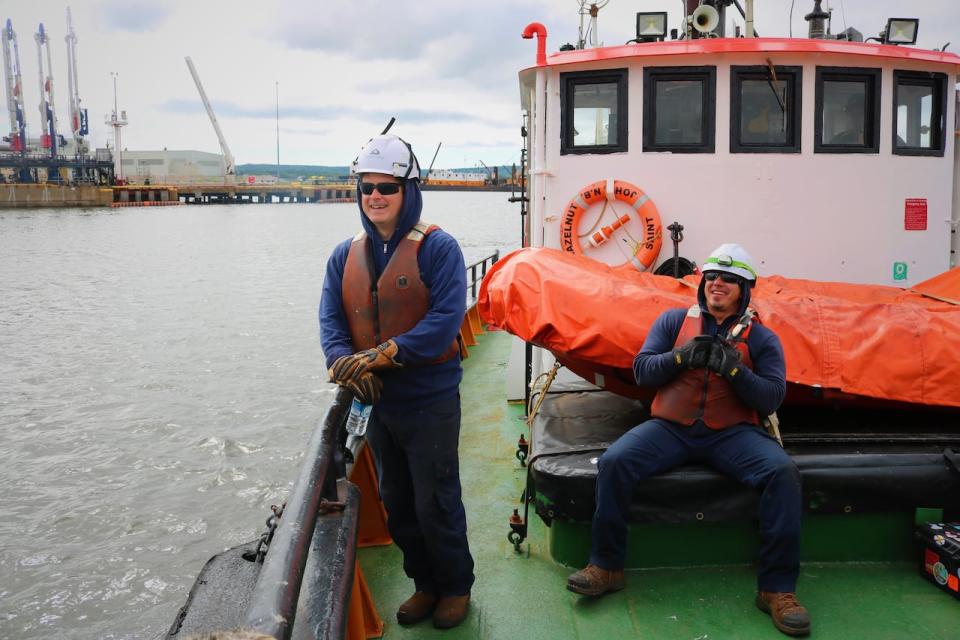
Deckhands Alex Black and Nick MacPhee on the deck of the Irving Hazelnut. (Julia Wright/CBC)
"It's like living a second life," Crowley said. "You have your family at home, and you're leaving them for two weeks, and you're going to go live and work and play with a different family."
"It's almost not even like work," Burley said. "It's super enjoyable."
"I've seen a lot of seafarers come and go," Roger said. "The crews we have here are in my opinion — and a lot of people's opinions — first class.
They don't get any better."
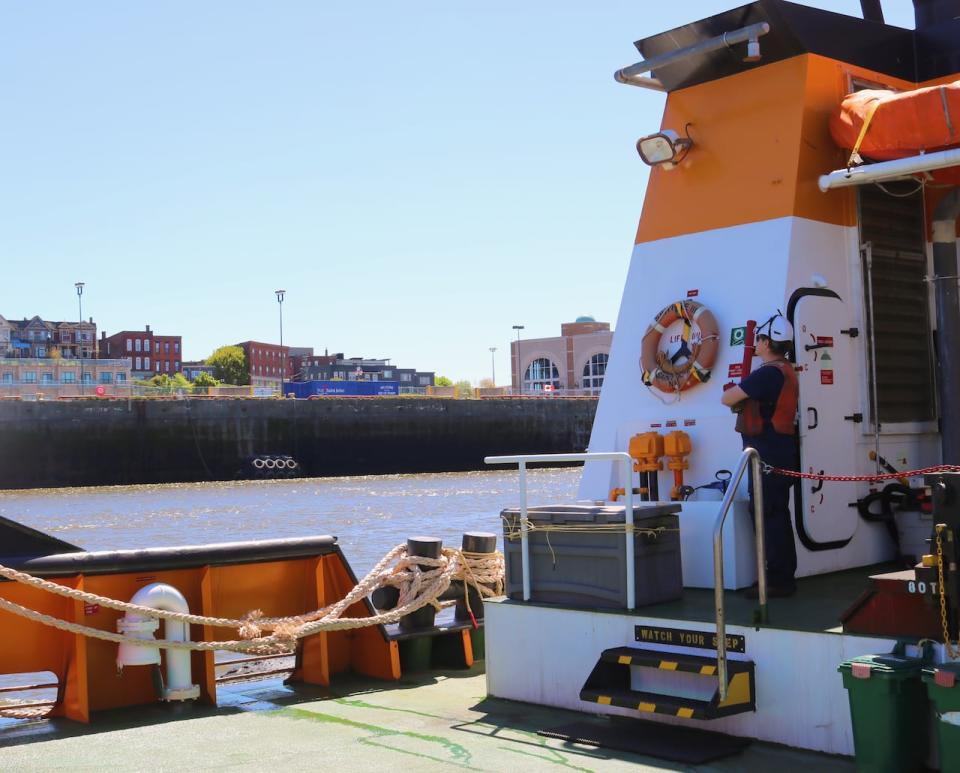
Deckhand Alex Black surveys the view of the south end of Saint John and the Marco Polo cruise ship terminal, a vantage point few locals get to experience every day. (Julia Wright/CBC)


